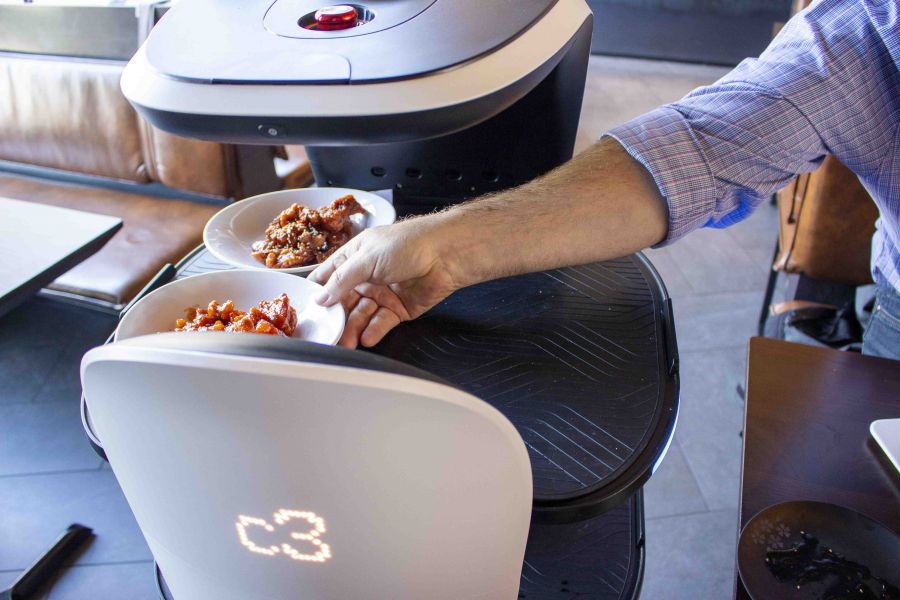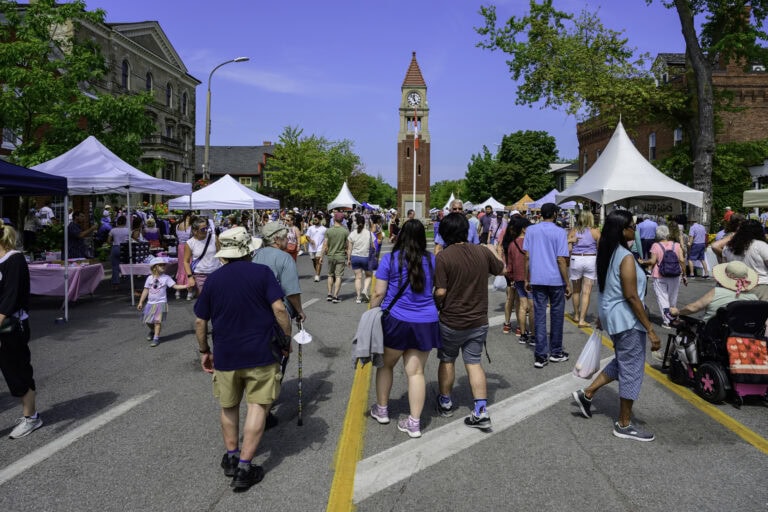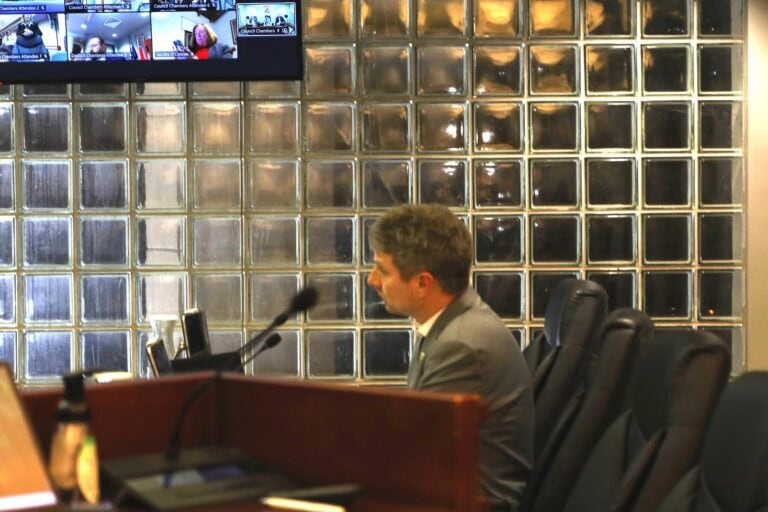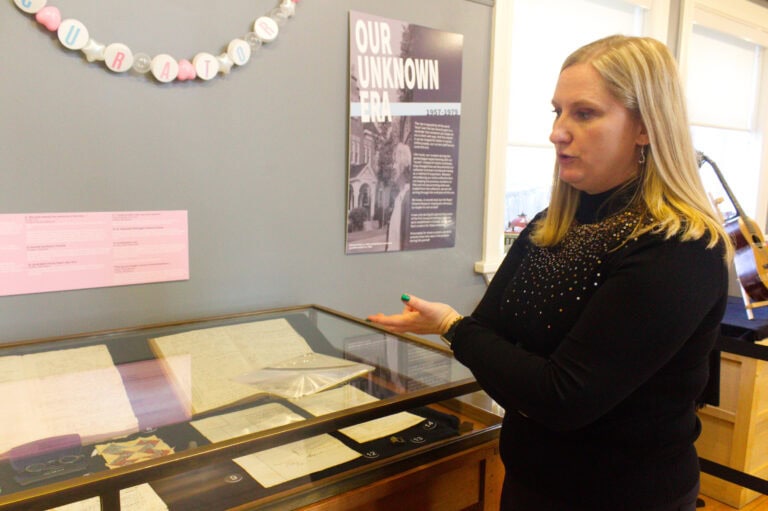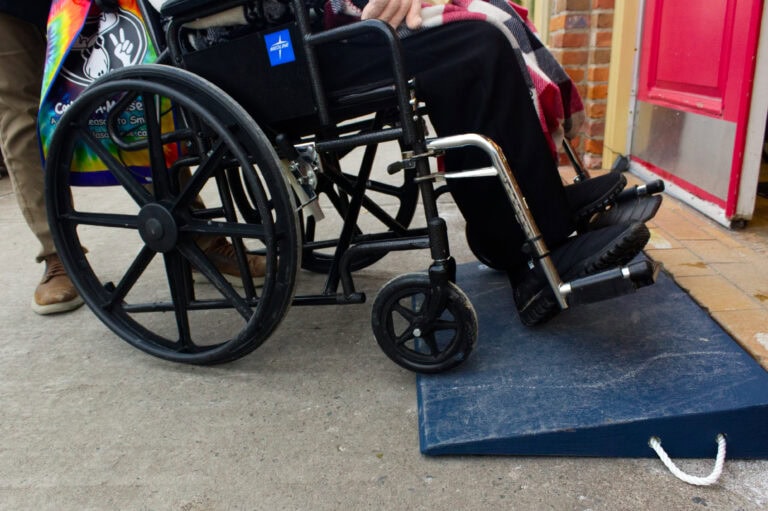If you build them, they will serve you sushi.
Or more accurately, if you program them, they'll know where to take it.
Niagara sushi restaurant East Izakaya has become the first in the Niagara region to start utlizing robots to serve tables. And it's not as scary as it sounds.
The robots are programmed to know the layout of the restaurant and zoom around and collect food orders from the kitchen. Once they've got the food, they head over to the tables and bring food to the customer, who takes it off of the tray.
Craig McCallum, creative director for Wind Group Inc., which owns East Izakaya and several other Asian-inspired restaurants in Niagara, says the robots are a fun marketing tool and something new to add to the experience.
“We're a type of company that always looks for something new,” McCallum said, during an interview early September at the East Izakaya in Niagara Falls.
When the opportunity for a robot server came up, it “checked all the boxes” for the company's core values — to be innovative, different, while focusing on the customer experience, McCallum said.
“The motivation to bring the robots in was not about saving money, or labour costs, it was about, 'Well, this is really interesting,'” McCallum said.
“I'm right away thinking marketing — people talk about it, they take photos. I think about all the Instagram posts, there's many that have come up so far. Yeah, and so right away the mind starts going like, 'We can do so much with this.'”
With serving sushi in mind, he started researching various models that could suit the company's needs. Right now the company has one bot in service, but more are on the way. They plan to add about 30 or 40 more to the fleet.
Once the first one arrived, McCallum had to learn the programming and get it ready to serve the store. That involves grid-mapping the layout of the restaurant, programming table numbers and making sure the robot has access wherever it needs to go.
But luckily, the robot does most of that work itself, too.
“The robot has a series of sensors on the bottom,” he said. “And essentially it works like like a bat or sonar. It basically sends out lasers around the room when there's nobody here and it maps solids and non-solids. And then when you're done, it says, 'Okay, I have the room, here it is.' So now I have the whole restaurant mapped like a construction site,” McCallum said.
Once the robot knows where each table is, the next part is programming its behaviour — how it will approach the table, and even having the robot seat guests when they arrive.
The same technology that lets the robot map the building also allows it to see people in front of it, so it won't bump into guests or customers. But stay in its way too long, and it'll let you know by telling you “you're annoying.”
Now, he says the robots work side-by-side with human servers to make life easier for them and the customer.
“If it were up to me we'd have four to six,” McCallum said.
McCallum is imaginative. He's had ideas like buying an authentic Japanese samurai suit and standing out front of the store. But robots were a natural next step, he said. People have been posting about them on Instragram and building up hype for the restaurant.
And in a time when it's hard to find labour, he said it's also helping fill a work gap.
However, knowing there would be a conversation about robots and how that affects human jobs, he said the company wanted to make sure it was the right decision and not get employees frustrated or worried about their employment security.
“We have amazing people in our company, and they stay with us. So, bringing a robot in, it had to kind of pass that litmus test. So, can it be a co-worker, not a replacement worker? Yeah, it can work alongside our staff. Can it enhance our service? Yeah, it can do that. Will the guests love it? Yeah. So it's like, alright, that all works. What else can it do? Is it great for PR? Yeah. Does it say happy birthday to you? Yes.”
He said one of the top questions they've been getting about it is: Is it a labour replacement? To which McCallum says that's “a hard no.”
“It's a co-worker. That's it,” he reiterates.
“If anything, it helps our staff because Amy can come over and pay attention to us. Do you need some more sauce, how are your napkins, your water needs a top up, how's your meal, how's everything going? We got our meal from the robot … it was Amy that came over and added that human element. The robot can't say 'How's your meal?'”
Asked specifically if the restaurant needs to hire less staff now, he said no.
“It is a food runner, it's a guest greeter, it's a happy birthday singer, but it will not allow us to reduce our staff.”
He said if bringing in a robot meant less staff, it wouldn't fit the company values.
“If we were to bring a robot in (and said) 'Well, let's bring in robots and we can not hire people, or lay off people,' it goes through that process again — does it reach our values in our company? And as soon as you get to the second one, you know, about teamwork, integrity, it's like, so do we want to be the company in Niagara Falls that has no staff, except for the hostess and a person on the phone for takeout and then robots? No, that's not (our values).”
Asked if down the road the reliance on robots might increase, he said it's possible, but the goal isn't to replace employees.
“Listen, if I had a bubble tea store — all robots. You know I'd even hire a robot or bring a robot in to make the bubble tea. If I can sit back and spend $100,000 on robots to do everything, I would do it if I were a bubble tea store. But what are we gonna do when a guest has an issue? You know, the robot, you go, 'hey man, blah blah blah, there's this in my food, or this and this and this,' and the robot goes, 'Thank you, bye.' You know, can you imagine that? You're (complaining) and wagging your finger and it goes, 'Have a great day.' Talk about a slap in the face. So no, it doesn't work with us.”
He said for now it's a marketing tool until people are used to it.
“It's always going to be a marketing thing, because people talk about it. And then, one day, maybe it won't be a marketing thing. It'll be normal.”
Pressed on the issue, McCallum said arguably lots of things could be considered job replacements.
“I mean, one could argue that the robot is a replacement, but that to me is a slanted argument. You could send out about anything — buying a vending machine for the school, we don't need people in the cafeteria, a bubblegum machine will entertain the kids, we don't need that clown in the school — you know, you can argue that all the time. But it really does depend on what kind of company you are. If I'm looking for efficiencies, a robot to hand me tools while I'm under the car. That's a great decision, because it benefits the guests,” he said.
“If you are a business owner, and that is your goal, it can be. But that's not who we are. Now it doesn't mean that the next business we start can't be like that. But we would go after it, we would say 'let's build a business, strictly with robots,' which means that we're building something for the robot, as opposed to we're building something to get rid of people.”
The staff at the restaurant don't seem to mind it. They even named it Bella — despite McCallum's attempt to name it Toby. A server, who goes by Amy, chuckles when the name is mentioned.
McCallum said it's nice to see a positive reaction to the bots from servers.
“I like to hear that from (the servers), because if they said, 'God, am I losing my job?' we have totally failed,” McCallum said.
The proof that real jobs aren't being sacrificed is that the company is actively trying to hire people. However, it's been a challenge to find workers during the pandemic, he said.
Very few people showed up to a job fair the company hosted.
“You asked the question, what do you say to people that ask about robots replacing jobs? The answer is really simple. Every day in the news you hear people say, I can't find staff. We're not taking any jobs away, there are literally thousands of jobs not getting employees,” McCallum said.
“We're not in a world where the labour force is saturated. We're in a world where there's too many jobs and not enough employees. So the argument of replacing workers is nullified.”
Asked about the cost of the robots, McCallum didn't want to name a firm price, but that they range from $15,000 and up.
“I'll answer it this way: It's a fraction of the cost of an employee,” he said. “It's a tenth of the cost.”
It's also a one time investment, he agreed.
The robots are purchased from SPARC Technologies, which is the Ontario distributer for a Chinese company called PUDU Robotics.
He said the robot is also able to servce alcohol but wasn't sure yet if it has the ability to check IDs — another example of how, for now, humans will still be needed for many jobs robots can't do.
One added bonus for customers — robots don't need tips. Although since the robots work with the servers, folks shouldn't be putting away their wallets just yet.



